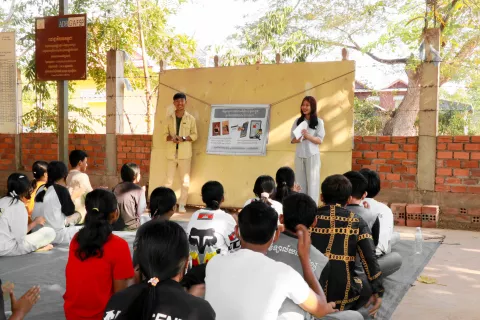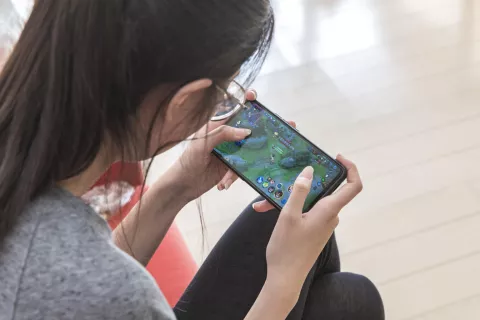Sex education can be controversial. We are told by its opponents that we are teaching children how to have sex. That we are undermining the institution of marriage. That we are insensitive to local culture. Or that we are usurping or replacing the role of parents.
We need to challenge these arguments head on. Every parent and community wants the best for their children. Nobody wants their children to contract HIV or other sexually transmitted diseases. And few, if any, want their daughters to become mothers while they are still children.
They may believe that not teaching children about sex means they won’t have sex, but the evidence shows that the reverse is true. Not teaching children about sex doesn’t mean they won’t have sex. It means they are more likely to have unsafe, unprotected sex. It leaves them entering the world of adulthood unprepared.
We have a responsibility to protect children in this region. We know that they are entering puberty and adolescence earlier than before. And that the transition from childhood to adulthood is getting longer. During this transition, girls and boys cannot be left alone to fend for themselves without the tools to make informed and safe choices.
What can be done?
Research from around the world shows that comprehensive sexuality education in schools is absolutely the best way to prepare children for adulthood. We know that good quality sex education – including gender and human rights – can lead to a decrease in unintended pregnancies and sexually transmitted infections.
Sex education does this by changing behaviours. It leads to a later start of sexual activity with a reduced number of partners. It leads to increased contraceptive and condom use. And – importantly – research clearly shows that it does not lead to an increase in sexual activity among young people.
Today there are more than one billion 10 to 19-year-olds in the world. They are growing up in circumstances quite different from those of their parents. They face both the benefits and risks of mobile Internet access. The environment in which they are making decisions about their sexual and reproductive health is rapidly changing and often uninformed.
In order for sex education to be effective, it needs to reach young people before they become sexually active. It needs to be age-appropriate and delivered in a participatory and engaging way that is based on science and facts.
It should cover issues such as relationships, puberty, sexual diversity, stigma and discrimination. It should include opportunities for young people to explore their attitudes and values. And it should give them a chance to practice key skills such as negotiation and decision-making.
Given the many benefits of sex education, it is important that this is included in the formal curriculum in schools, and that teachers are trained to deliver this. Schools offer the best way to reach large numbers of young people with meaningful, two-way communication. We also need activities to reach children who are not in school, as these are often the most vulnerable and marginalized.
We need to help teachers do this well. Lecture-style teaching is not an effective way to learn about private and sensitive issues. Girls and boys need a safe space in which to learn. They need to feel confident to ask questions, to share their thoughts and stories. Teachers need support to provide the right settings and learning opportunities. Girls and boys need analytical skills to help them make good decisions about sexual activity.

Gender norms
Adolescent girls are at a comparative disadvantage compared to boys. It can be harder for them to negotiate not having sex or having safer sex. They have additional barriers to using contraceptives and preventing unplanned pregnancies. They may have more problems accessing reproductive health services. They are at greater risk of sexual abuse and early marriage. And they face additional health risks if they do become pregnant.
Addressing this is not just about sexuality information alone. Understanding gender, power and rights are key to making informed and safe choices. These concepts need to be integral components of sex education. The risk of experiencing violence, rape, and forced sexual encounters are deeply rooted in gender inequality.
Gender norms in this region are often associated with masculinity. It is assumed that men should take control of relationships. Women and girls are placed in a lower status. This inequality can lead to an acceptance of violence against women and girls. It can lead to a lack of consensual decision-making over sexual behaviour.
Popular culture including movies, music and television often underpin notions of young women who are taken without consent, and subsequently fall in love with their ‘conqueror’.
We need to empower girls and boys to break the cycle of unequal power relations. To equip them with negotiation and life skills to develop equal, respectful and consensual relationships. They need to make informed and safe choices together, on an equal footing.
Innovation
We need new and innovative approaches to sexuality education. We need to think outside the box and leverage technology and connectivity of girls and boys in the region. We know that 90 percent of adolescents in Thailand are connected to the Internet. What options do they have to find appropriate sexuality information in cyberspace? What are the alternatives to pornography for adolescent boys and girls who are curious about sex?
We need to step up our efforts to find strategies, content and partners to deliver sexual health information in safe, positive and age-appropriate ways. This can be done via mobile apps and social media platforms where teenagers communicate most often. Sexuality education needs to keep pace with the lives of today’s youth.
Today’s adolescents will determine the social fabric, economic success, and wellbeing of Asia-Pacific nations in the decades to come. It is our responsibility to ensure they receive the essential knowledge and skills to become healthy and responsible adults.
And – when they are ready – to become parents themselves to the next generation.
About the author:
Karin Hulshof is the UNICEF Deputy Executive Director and was formerly Regional Director for UNICEF East Asia and Pacific






